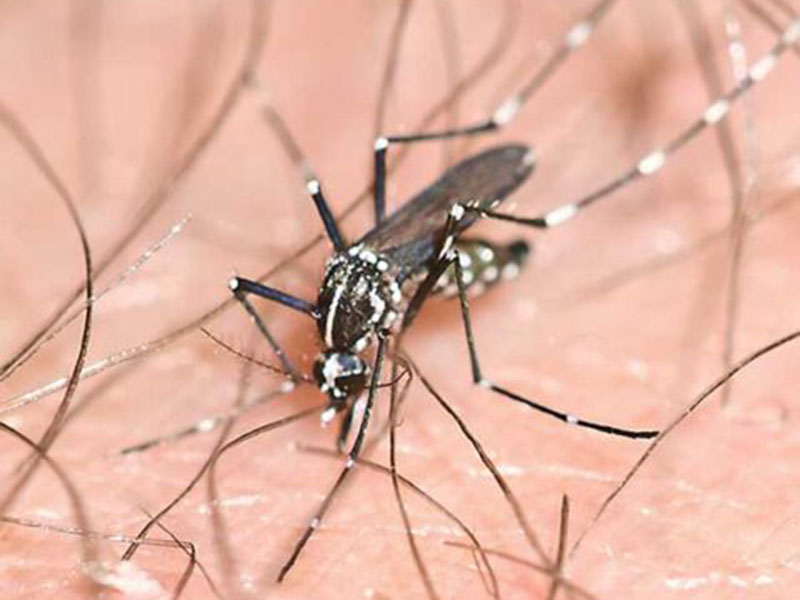Mosquitoes are insects belonging to the order Diptera, the True Flies. Like all True Flies, they have two wings, but unlike other flies, mosquito wings have scales. Female mosquitoes’ mouthparts form a long piercing-sucking proboscis. Males differ from females by having feathery antennae and mouthparts not suitable for piercing skin. A mosquito’s principal food is nectar or similar sugar source.

There are over 3,000 different species of mosquitoes throughout the world; currently 176 species are recognized in the United States. A new species, Anopheles grabhamii, was reported from the Florida Keys in 2001 (Darsie et al. 2002). Each mosquito species has a Latin scientific name, such as Anopheles quadrimaculatus. Anophelesis the “generic” name of a group of closely related mosquitoes and quadrimaculatus is the “species” name that represents a group of individuals that are similar in structure and physiology and capable of interbreeding. These names are used in a descriptive manner so that the name tells something about each particular mosquito, for example, Anopheles – Greek meaning hurtful or prejudicial and quadrimaculatus – Latin meaning four spots (4 dark spots on the wings). Some species have what are called “common names” as well as scientific names, such as Ochlerotatus taeniorhynchus, the “black salt marsh mosquito.”
Scientific investigators (taxonomists) are constantly looking for new mosquitoes, as well as reviewing previously identified specimens for new information or identifying characteristics. Better microscopic equipment developed in the last 20 years has improved the taxonomist’s ability to determine differences between species. Recently such a review by Dr. John Reinert (2000) led to a change in the name of many mosquitoes belonging to the genus Aedes. Using improved methods and over 30 years’ experience he elevated a subgenus of Aedes (Ochlerotatus) to the status of genus. This will necessitate the renaming of many mosquitoes previously named Aedes to the genus Ochlerotatus and the rewriting of many taxonomic keys important to public health entomologists working in mosquito control. https://www.mosquito.org/page/mosquitoinfo
